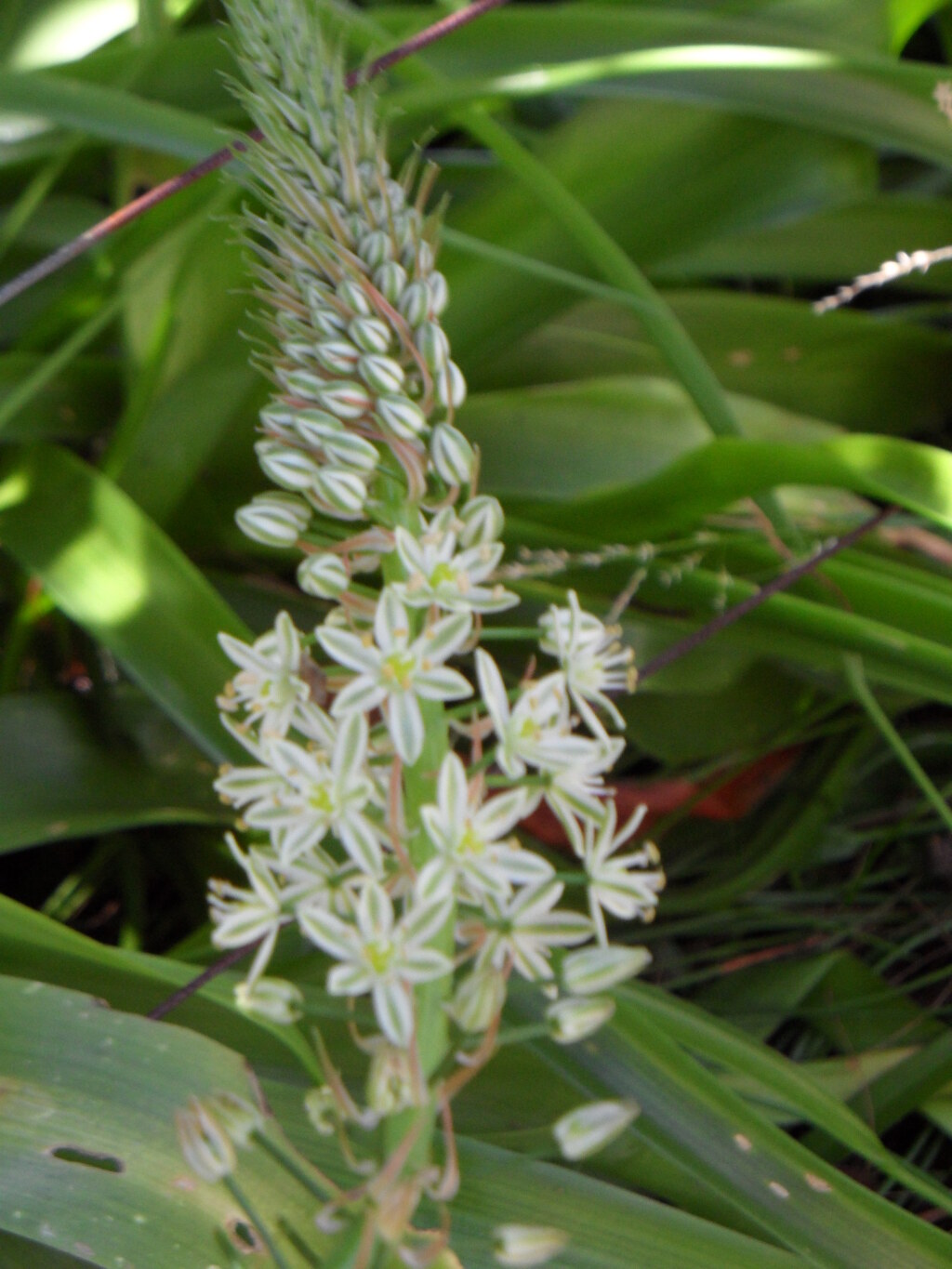Albuca
Tufted perennial herbs with bulbs encased by a tunic. Roots fibrous. Leaves all basal, annual, lanceolate to linear. Inflorescence erect, scapose, subspicate, corymbose or racemose; flowers bisexual, each subtended by a membranous bract; perianth segments free, spreading, subequal, oblong, thick-textured, whitish or yellowish with a broad green central stripe associated a network of 3–5 prominent veins; stamens 6, filaments simple or with a basal appendage, anthers versatile, dorsifixed, dehiscing introrsely by slits; ovary superior, 3-locular; ovules 2–many per locule; style short to elongate, stigma minute, capitate. Fruit a loculicidal capsule; seeds numerous, angular, crescent-shaped or globose, black.
About 110-140 species, mainly sub-Saharan Africa, with 1 species extending into Ethiopia (Manning et al 2009); commonly grown in horticulture in Australia, 2 naturalized in Victoria.
 Spinning
SpinningManning. J.C.; Forest, F.; Devey, D.S.; Fay, M.F.; Goldblatt, P. (2009). A molecular phylogeny and a revised classification of Ornithogaloideae (Hyacinthaceae) based on an analysis of four plastid DNA regions. Taxon 58(1): 77–107.



